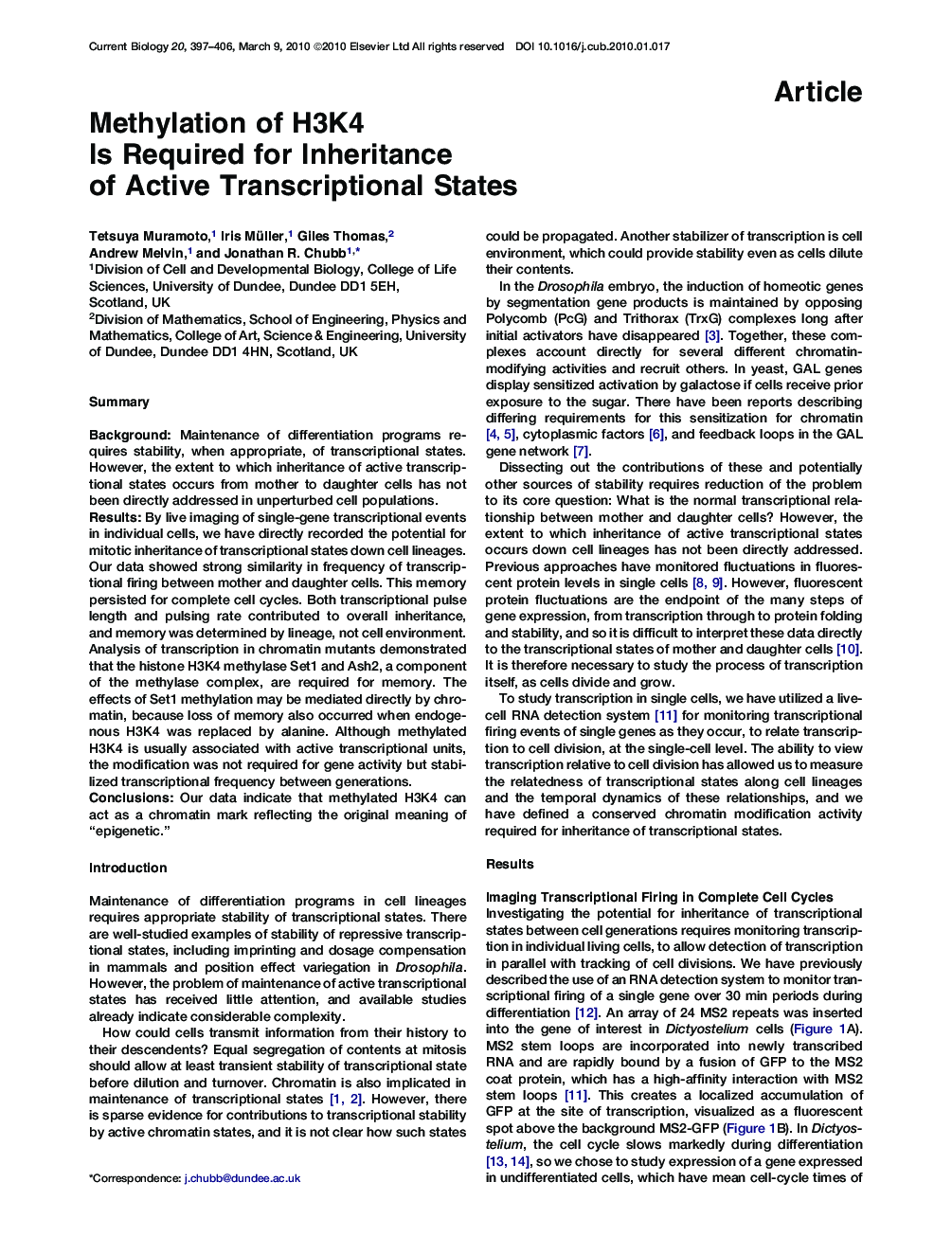| Article ID | Journal | Published Year | Pages | File Type |
|---|---|---|---|---|
| 2043147 | Current Biology | 2010 | 10 Pages |
SummaryBackgroundMaintenance of differentiation programs requires stability, when appropriate, of transcriptional states. However, the extent to which inheritance of active transcriptional states occurs from mother to daughter cells has not been directly addressed in unperturbed cell populations.ResultsBy live imaging of single-gene transcriptional events in individual cells, we have directly recorded the potential for mitotic inheritance of transcriptional states down cell lineages. Our data showed strong similarity in frequency of transcriptional firing between mother and daughter cells. This memory persisted for complete cell cycles. Both transcriptional pulse length and pulsing rate contributed to overall inheritance, and memory was determined by lineage, not cell environment. Analysis of transcription in chromatin mutants demonstrated that the histone H3K4 methylase Set1 and Ash2, a component of the methylase complex, are required for memory. The effects of Set1 methylation may be mediated directly by chromatin, because loss of memory also occurred when endogenous H3K4 was replaced by alanine. Although methylated H3K4 is usually associated with active transcriptional units, the modification was not required for gene activity but stabilized transcriptional frequency between generations.ConclusionsOur data indicate that methylated H3K4 can act as a chromatin mark reflecting the original meaning of “epigenetic.”
► Direct visualization of inheritance of transcriptional frequency through mitosis ► Inherited states persist for a cell cycle and can be cell autonomous ► Inherited states require histone H3K4 methylation ► H3K4Me maintains both high and low frequencies, not simply the “on” state
